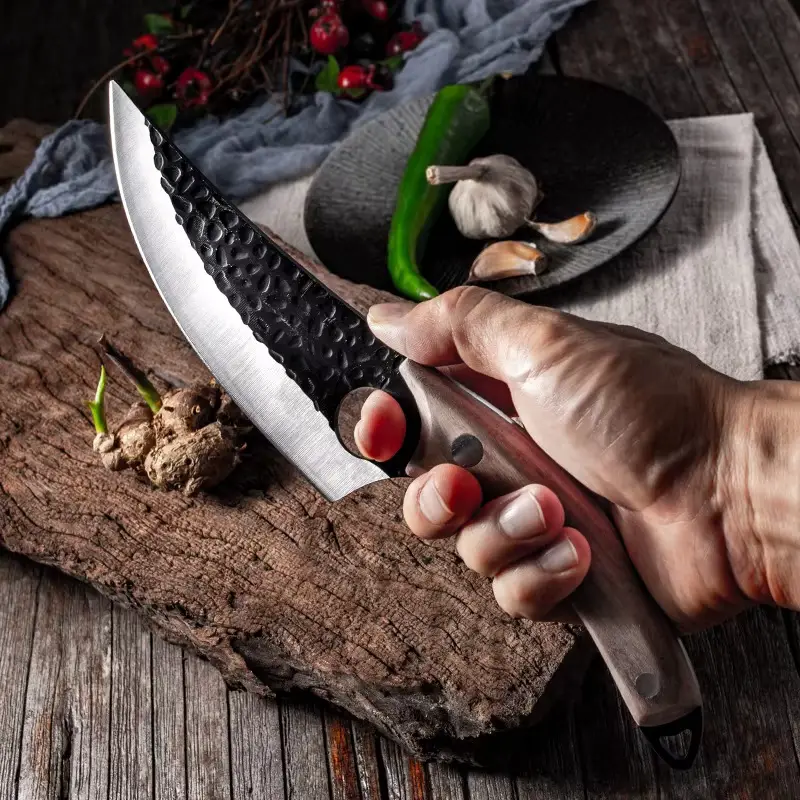Few things evoke the comforting embrace of British culinary tradition quite like a perfectly baked sausage roll. For me, they are intrinsically linked to childhood memories – tucked into lunchboxes for school trips, served warm at family gatherings, or grabbed hastily from a local bakery on a chilly afternoon. The combination of flaky, buttery puff pastry shattering with each bite, giving way to a savoury, well-seasoned pork filling is simply iconic. While shop-bought versions can be convenient, there’s an undeniable magic to making them at home. The aroma that fills the kitchen as they bake is intoxicating, and the satisfaction of presenting a tray of golden, homemade sausage rolls is immense. My family adores them; they disappear alarmingly fast whenever I make a batch, whether served hot from the oven for a weekend lunch or packed cold for a picnic. This recipe aims to capture that authentic taste and texture, bringing a little piece of British comfort food heritage right into your own kitchen. It’s surprisingly straightforward and infinitely rewarding.
The Building Blocks: Ingredients You’ll Need
Creating truly excellent sausage rolls hinges on using good quality ingredients, particularly for the pastry and the sausage meat. Precision ensures the right balance of flavours and textures.
For the Sausage Filling:
- Good Quality Pork Sausage Meat: 1 lb (about 450g). This is the heart of the roll. Look for sausage meat with a decent fat content (around 20%) for flavour and moisture. Alternatively, buy good quality pork sausages (like Cumberland or Lincolnshire), remove the casings, and use the meat. Avoid overly lean options as they can become dry.
- Small Onion: 1, very finely chopped (about ½ cup). Adds moisture and a subtle aromatic sweetness. Ensure it’s chopped extremely finely so it cooks through and integrates well.
- Fresh Breadcrumbs: ½ cup (preferably from slightly stale white bread). Helps bind the mixture and retain moisture. Panko breadcrumbs can also be used for a slightly different texture.
- Fresh Sage: 1 tablespoon, finely chopped (or 1 teaspoon dried sage). A classic pairing with pork, providing that traditional savoury, slightly peppery flavour.
- Fresh Thyme Leaves: 1 teaspoon, finely chopped (or ½ teaspoon dried thyme). Complements the sage and pork.
- Salt: ½ teaspoon, or to taste (be mindful sausage meat can already be seasoned).
- Black Pepper: ½ teaspoon, freshly ground. Essential for flavour depth.
- Worcestershire Sauce: 1 teaspoon (optional, but adds umami depth).
- English Mustard Powder: ½ teaspoon (optional, adds a subtle background heat).
- Large Egg: 1, lightly beaten (for binding the filling). Reserve about half of this beaten egg for the egg wash later, or use a separate egg for the wash.
For the Pastry and Assembly:
- All-Butter Puff Pastry: 14 oz – 1 lb (about 400-500g). Using all-butter puff pastry yields the best flavour and flakiness. A good quality store-bought puff pastry (often found in the frozen section – thaw according to package directions) works beautifully and saves significant time. You’ll typically need one or two sheets depending on the brand/size.
- Large Egg: 1, lightly beaten with 1 tablespoon of milk or water (for egg wash). This gives the sausage rolls their beautiful golden sheen. (You can use the reserved portion from the filling egg if preferred).
- Plain Flour: For dusting the work surface.
- Optional Seeds: Sesame seeds or poppy seeds for sprinkling on top before baking.
Gathering these components and ensuring your puff pastry is properly thawed (if frozen) but still cold are the first crucial steps to sausage roll success.
Crafting Your Sausage Rolls: Step-by-Step Instructions
Follow these steps carefully for flaky pastry encasing a perfectly cooked, flavourful sausage filling. Remember to handle the puff pastry gently and keep it cool.
- Prepare the Filling: In a large bowl, combine the pork sausage meat, very finely chopped onion, fresh breadcrumbs, chopped fresh sage, chopped fresh thyme, salt, black pepper, optional Worcestershire sauce, and optional mustard powder. Add about half of the lightly beaten egg (reserve the other half for the egg wash, or prepare a separate egg wash later). Using your hands (the best tool for this!), gently mix all the ingredients together until just combined. Be careful not to overmix, as this can make the filling tough. The mixture should be homogenous but not compacted.
- Prepare the Work Surface and Pastry: Lightly flour your clean work surface. Unroll your sheet of thawed puff pastry. If it’s a block, roll it out gently into a large rectangle, approximately ⅛ inch (3-4mm) thick. If using pre-rolled sheets, you may just need to trim them slightly or use them as they are. Aim for rectangles roughly 12 inches long by 5 inches wide (30cm x 12cm), but dimensions can vary. Work relatively quickly to keep the pastry cool.
- Shape the Filling: Divide the sausage meat mixture into portions corresponding to the number of pastry rectangles you have (usually two long logs for standard pastry sheets). On the floured surface, gently roll each portion of the filling into a long, even sausage shape (log), roughly the length of your pastry rectangle. The diameter should be about 1-1.5 inches (2.5-4cm).
- Assemble the Rolls: Place one log of the sausage filling along one of the long edges of a pastry rectangle, leaving about a ½ inch (1cm) border.
- Apply Egg Wash for Sealing: Lightly brush the opposite long edge of the pastry rectangle with some of the prepared egg wash (egg mixed with milk/water). This acts as glue.
- Roll Up: Carefully but snugly, roll the pastry over the sausage filling, starting from the filling side and rolling towards the egg-washed edge. Ensure the pastry encases the filling completely. Press the seam gently to seal it firmly where the egg-washed edge meets the pastry roll.
- Position and Trim: Gently roll the entire log over so the seam is underneath. This helps prevent it from bursting open during baking. Trim any uneven ends if necessary. Repeat this process with the remaining pastry and filling.
- Chill (Optional but Recommended): For easier cutting and potentially flakier pastry, carefully place the long sausage rolls (seam-side down) onto a baking sheet lined with parchment paper and chill in the refrigerator for 15-30 minutes. This helps the pastry firm up.
- Preheat Oven: While the rolls are chilling (or while you finish assembly), preheat your oven to 400°F (200°C / Gas Mark 6). Line one or two large baking sheets with parchment paper.
- Cut into Rolls: Remove the chilled logs from the refrigerator. Using a sharp knife, cut each long log into individual sausage rolls. You can make standard sized rolls (about 2-3 inches / 5-7.5cm long) or mini cocktail-sized rolls (about 1-1.5 inches / 2.5-4cm long). Wipe the knife clean between cuts if needed.
- Arrange on Baking Sheets: Carefully place the cut sausage rolls onto the prepared baking sheets, ensuring the seam remains underneath. Leave a little space between each roll to allow for puffing and even baking.
- Score and Egg Wash: Using the tip of your sharp knife, lightly score the tops of the sausage rolls 2-3 times diagonally (this is traditional and helps steam escape). Be careful not to cut too deeply. Brush the tops and sides of each sausage roll generously and evenly with the prepared egg wash. This is crucial for achieving that deep golden-brown colour.
- Add Seeds (Optional): If desired, sprinkle the tops with sesame seeds or poppy seeds immediately after applying the egg wash.
- Bake: Place the baking sheets in the preheated oven. Bake for 20-25 minutes for standard size rolls, or 15-20 minutes for mini rolls. The exact time will depend on your oven and the size of the rolls. They are ready when the pastry is beautifully puffed up, deep golden brown, and crisp, and the sausage filling is cooked through (internal temperature should reach 165°F / 74°C if using a meat thermometer). If they brown too quickly, you can loosely tent them with foil for the last part of baking.
- Cool: Once baked, remove the baking sheets from the oven. Let the sausage rolls cool on the baking sheets for 5-10 minutes before transferring them carefully using a spatula to a wire rack to cool further. They are delicious served warm but also excellent at room temperature or cold.
Enjoy the satisfying crunch and savoury flavour of your homemade English Puff Pastry Sausage Rolls!
Nutritional Considerations (Approximate)
Understanding the nutritional profile is helpful. Please note these are estimates and will vary significantly based on the specific sausage meat fat content, type and amount of puff pastry used, and the size of the rolls.
- Servings: This recipe typically yields about 12-16 standard-sized sausage rolls or 24-30 mini cocktail-sized rolls.
- Calories per Serving (1 Standard Roll): Approximately 250-350 calories per standard roll.
- Calories per Serving (1 Mini Roll): Approximately 120-180 calories per mini roll.
Key Nutritional Contributors:
- Fat: Primarily from the puff pastry (especially all-butter) and the sausage meat. This contributes significantly to the flavour and texture but also the calorie count.
- Protein: From the pork sausage meat.
- Carbohydrates: Mainly from the puff pastry flour and a small amount from the breadcrumbs and onion.
- Sodium: Comes from the sausage meat seasoning, added salt, and potentially the puff pastry.
These are undeniably an indulgent treat. Enjoy them as part of a balanced diet, perfect for special occasions, parties, or a comforting snack.
Time Commitment: Planning Your Bake
Knowing the time involved helps schedule your sausage roll making session.
- Pastry Thawing Time (if using frozen): Varies by brand, often 2-3 hours at room temperature or overnight in the refrigerator (check package instructions). Factor this in!
- Active Preparation Time: 30-40 minutes. This includes chopping the onion, mixing the filling, handling the pastry, assembling the rolls, cutting, and egg washing.
- Chilling Time (Optional): 15-30 minutes (inactive time).
- Baking Time: 15-25 minutes (depending on size).
- Cooling Time: 10-15 minutes (minimum before serving warm).
- Total Time (excluding thawing): Approximately 1 hour to 1 hour 30 minutes (including optional chilling).
While not the quickest snack to make from scratch, the process is relatively simple, and much of the baking time is hands-off. The results are well worth the effort.
How to Serve Your Homemade Sausage Rolls
English Puff Pastry Sausage Rolls are wonderfully versatile and can be enjoyed in numerous ways. Here are some classic serving suggestions:
- Temperature:
- Hot/Warm: Serve fresh from the oven (after a brief cooling period) for the ultimate flaky pastry experience. Perfect for brunch, lunch, or as a substantial party appetizer.
- Room Temperature/Cold: Equally delicious served cold, making them ideal for picnics, lunchboxes, buffets, and make-ahead party food.
- Accompaniments:
- Mustards: A dollop of sharp English mustard is traditional. Dijon, wholegrain, or honey mustard also work well.
- Sauces & Condiments: Tomato ketchup is a popular choice, especially with kids. Brown sauce (like HP Sauce) is another classic British pairing.
- Chutneys & Pickles: A fruity chutney (like apple or tomato), or Branston pickle adds a sweet and tangy contrast.
- On the Side:
- Simple Salad: A crisp green salad with a light vinaigrette balances the richness.
- Coleslaw: Creamy or vinegar-based coleslaw adds freshness.
- Ploughman’s Lunch: Include them as part of a traditional Ploughman’s platter with cheese, pickles, bread, and salad.
- Occasions:
- Parties & Gatherings: Mini sausage rolls are perfect finger food. Standard size are great for more substantial offerings.
- Picnics: Pack them cold – they travel well.
- Lunchboxes: A delightful treat for school or work.
- Afternoon Tea: Mini versions can make an appearance as a savoury option.
- Casual Meals: Serve 2-3 standard rolls with sides for a simple lunch or dinner.
- Drinks:
- Pair with a traditional British ale or cider.
- A cup of tea is always a fitting companion!
No matter how you serve them, these homemade sausage rolls are sure to be a crowd-pleaser.
Top Tips for Perfect Sausage Rolls
Achieve bakery-worthy results every time with these five essential tips:
- Keep Everything Cold: Puff pastry relies on layers of butter and dough. Keeping the pastry cold is paramount for achieving maximum puff and distinct layers. Handle it as little as possible, work quickly, and if your kitchen is warm or the pastry feels soft, pop it back in the fridge (covered) for 15 minutes at any stage (before rolling, after assembling the logs, before baking). Chilling the assembled rolls before cutting and baking also helps them keep their shape and puff up better.
- Use Good Quality Sausage Meat: The filling is half the experience. Choose flavourful pork sausage meat with adequate fat content (around 20%). Overly lean meat will result in a dry filling. If buying sausages, remove the casings from high-quality ones rather than using budget sausage meat, which can be overly processed or lack flavour.
- Don’t Overfill or Roll Too Tightly: While you want a generous filling, overstuffing the pastry can cause it to burst during baking. Similarly, rolling the pastry too tightly around the filling can inhibit its ability to puff up properly. Aim for a snug roll, but not constricting. Ensure the seam is well-sealed underneath.
- Score and Egg Wash Generously: Scoring the tops lightly allows steam to escape, preventing potential splitting, and creates a traditional look. A thorough, even coating of egg wash (egg mixed with a little milk or water) is crucial for achieving that beautiful, deep golden-brown, glossy finish. Don’t let it pool underneath, but ensure tops and visible sides are well-coated.
- Bake Until Deeply Golden: Don’t pull them out too early! Pale sausage rolls lack flavour and visual appeal. Bake until the pastry is well-puffed, firm, and a rich, deep golden brown all over. This ensures the pastry is cooked through and crisp, not doughy, and the filling is piping hot and fully cooked. Rotate baking sheets halfway through if needed for even colour.
By paying attention to these details, particularly temperature control and baking time, you’ll consistently produce impressive and delicious homemade sausage rolls.
Your Sausage Roll Questions Answered: FAQ
Here are answers to some frequently asked questions about making English Puff Pastry Sausage Rolls:
- Q: Can I use different types of meat for the filling?
- A: Yes, absolutely! While pork is traditional, you can substitute with ground turkey, chicken, beef, or even lamb. Keep fat content in mind for moisture (you might need to add a little extra binder or fat if using very lean meat). Seasonings can be adjusted accordingly (e.g., rosemary with lamb, paprika with beef). Vegetarian versions using spiced lentil, mushroom, or cheese and onion fillings are also popular.
- Q: Can I make sausage rolls ahead of time? Can they be frozen?
- A: Yes, they are great for making ahead!
- Unbaked: Assemble the rolls fully (cut into individual pieces, placed on a parchment-lined tray), but don’t egg wash them yet. Freeze them solid on the tray, then transfer to a freezer bag or container. They can be frozen for up to 2-3 months. Bake directly from frozen, adding the egg wash just before baking and increasing the baking time by 5-10 minutes.
- Baked: Bake the sausage rolls completely, let them cool fully, then freeze on a tray before transferring to a freezer bag/container. Reheat from frozen on a baking sheet in a moderate oven (around 350°F/180°C) for 10-15 minutes, or until heated through and crisp. Alternatively, thaw first and reheat.
- A: Yes, they are great for making ahead!
- Q: Why did my puff pastry get soggy on the bottom?
- A: Soggy bottoms can happen for a few reasons:
- Filling too wet: Ensure your onion is finely chopped and doesn’t add excessive moisture. Don’t add extra liquid ingredients to the filling.
- Pastry not cold enough: Warm pastry won’t puff properly and can absorb moisture.
- Oven not hot enough: A hot oven helps the pastry layers puff and set quickly before they get soggy. Ensure your oven is fully preheated.
- Not baked long enough: Ensure the bottom pastry is fully cooked and golden. Baking on parchment paper on a sturdy baking sheet helps. Some bakers recommend baking on a preheated baking sheet for extra bottom heat.
- A: Soggy bottoms can happen for a few reasons:
- Q: Can I add other ingredients to the sausage filling?
- A: Definitely! Feel free to customize the filling. Popular additions include: finely chopped apple (adds moisture and sweetness), grated cheese (cheddar or Stilton), caramelized onions instead of raw, different herbs (parsley, rosemary), spices (nutmeg, cloves, cayenne pepper), or even black pudding crumbled into the mix. Just ensure additions are finely chopped and don’t make the mixture too wet.
- Q: Is it worth making my own puff pastry?
- A: Homemade puff pastry is a labour of love and can yield incredible results with distinct buttery layers. However, it is time-consuming and requires technique (lamination). For most home cooks, especially for recipes like sausage rolls where the filling is also a star, using a good quality, all-butter store-bought puff pastry is an excellent and convenient option that still produces fantastic, flaky results. Don’t feel obligated to make your own unless you enjoy the process!

English Puff Pastry Sausage Rolls recipe
Ingredients
- Good Quality Pork Sausage Meat: 1 lb (about 450g). This is the heart of the roll. Look for sausage meat with a decent fat content (around 20%) for flavour and moisture. Alternatively, buy good quality pork sausages (like Cumberland or Lincolnshire), remove the casings, and use the meat. Avoid overly lean options as they can become dry.
- Small Onion: 1, very finely chopped (about ½ cup). Adds moisture and a subtle aromatic sweetness. Ensure it’s chopped extremely finely so it cooks through and integrates well.
- Fresh Breadcrumbs: ½ cup (preferably from slightly stale white bread). Helps bind the mixture and retain moisture. Panko breadcrumbs can also be used for a slightly different texture.
- Fresh Sage: 1 tablespoon, finely chopped (or 1 teaspoon dried sage). A classic pairing with pork, providing that traditional savoury, slightly peppery flavour.
- Fresh Thyme Leaves: 1 teaspoon, finely chopped (or ½ teaspoon dried thyme). Complements the sage and pork.
- Salt: ½ teaspoon, or to taste (be mindful sausage meat can already be seasoned).
- Black Pepper: ½ teaspoon, freshly ground. Essential for flavour depth.
- Worcestershire Sauce: 1 teaspoon (optional, but adds umami depth).
- English Mustard Powder: ½ teaspoon (optional, adds a subtle background heat).
- Large Egg: 1, lightly beaten (for binding the filling). Reserve about half of this beaten egg for the egg wash later, or use a separate egg for the wash.
For the Pastry and Assembly:
- All-Butter Puff Pastry: 14 oz – 1 lb (about 400-500g). Using all-butter puff pastry yields the best flavour and flakiness. A good quality store-bought puff pastry (often found in the frozen section – thaw according to package directions) works beautifully and saves significant time. You’ll typically need one or two sheets depending on the brand/size.
- Large Egg: 1, lightly beaten with 1 tablespoon of milk or water (for egg wash). This gives the sausage rolls their beautiful golden sheen. (You can use the reserved portion from the filling egg if preferred).
- Plain Flour: For dusting the work surface.
- Optional Seeds: Sesame seeds or poppy seeds for sprinkling on top before baking.
Instructions
- Prepare the Filling: In a large bowl, combine the pork sausage meat, very finely chopped onion, fresh breadcrumbs, chopped fresh sage, chopped fresh thyme, salt, black pepper, optional Worcestershire sauce, and optional mustard powder. Add about half of the lightly beaten egg (reserve the other half for the egg wash, or prepare a separate egg wash later). Using your hands (the best tool for this!), gently mix all the ingredients together until just combined. Be careful not to overmix, as this can make the filling tough. The mixture should be homogenous but not compacted.
- Prepare the Work Surface and Pastry: Lightly flour your clean work surface. Unroll your sheet of thawed puff pastry. If it’s a block, roll it out gently into a large rectangle, approximately ⅛ inch (3-4mm) thick. If using pre-rolled sheets, you may just need to trim them slightly or use them as they are. Aim for rectangles roughly 12 inches long by 5 inches wide (30cm x 12cm), but dimensions can vary. Work relatively quickly to keep the pastry cool.
- Shape the Filling: Divide the sausage meat mixture into portions corresponding to the number of pastry rectangles you have (usually two long logs for standard pastry sheets). On the floured surface, gently roll each portion of the filling into a long, even sausage shape (log), roughly the length of your pastry rectangle. The diameter should be about 1-1.5 inches (2.5-4cm).
- Assemble the Rolls: Place one log of the sausage filling along one of the long edges of a pastry rectangle, leaving about a ½ inch (1cm) border.
- Apply Egg Wash for Sealing: Lightly brush the opposite long edge of the pastry rectangle with some of the prepared egg wash (egg mixed with milk/water). This acts as glue.
- Roll Up: Carefully but snugly, roll the pastry over the sausage filling, starting from the filling side and rolling towards the egg-washed edge. Ensure the pastry encases the filling completely. Press the seam gently to seal it firmly where the egg-washed edge meets the pastry roll.
- Position and Trim: Gently roll the entire log over so the seam is underneath. This helps prevent it from bursting open during baking. Trim any uneven ends if necessary. Repeat this process with the remaining pastry and filling.
- Chill (Optional but Recommended): For easier cutting and potentially flakier pastry, carefully place the long sausage rolls (seam-side down) onto a baking sheet lined with parchment paper and chill in the refrigerator for 15-30 minutes. This helps the pastry firm up.
- Preheat Oven: While the rolls are chilling (or while you finish assembly), preheat your oven to 400°F (200°C / Gas Mark 6). Line one or two large baking sheets with parchment paper.
- Cut into Rolls: Remove the chilled logs from the refrigerator. Using a sharp knife, cut each long log into individual sausage rolls. You can make standard sized rolls (about 2-3 inches / 5-7.5cm long) or mini cocktail-sized rolls (about 1-1.5 inches / 2.5-4cm long). Wipe the knife clean between cuts if needed.
- Arrange on Baking Sheets: Carefully place the cut sausage rolls onto the prepared baking sheets, ensuring the seam remains underneath. Leave a little space between each roll to allow for puffing and even baking.
- Score and Egg Wash: Using the tip of your sharp knife, lightly score the tops of the sausage rolls 2-3 times diagonally (this is traditional and helps steam escape). Be careful not to cut too deeply. Brush the tops and sides of each sausage roll generously and evenly with the prepared egg wash. This is crucial for achieving that deep golden-brown colour.
- Add Seeds (Optional): If desired, sprinkle the tops with sesame seeds or poppy seeds immediately after applying the egg wash.
- Bake: Place the baking sheets in the preheated oven. Bake for 20-25 minutes for standard size rolls, or 15-20 minutes for mini rolls. The exact time will depend on your oven and the size of the rolls. They are ready when the pastry is beautifully puffed up, deep golden brown, and crisp, and the sausage filling is cooked through (internal temperature should reach 165°F / 74°C if using a meat thermometer). If they brown too quickly, you can loosely tent them with foil for the last part of baking.
- Cool: Once baked, remove the baking sheets from the oven. Let the sausage rolls cool on the baking sheets for 5-10 minutes before transferring them carefully using a spatula to a wire rack to cool further. They are delicious served warm
Nutrition
- Serving Size: one normal portion
- Calories: 120-180






